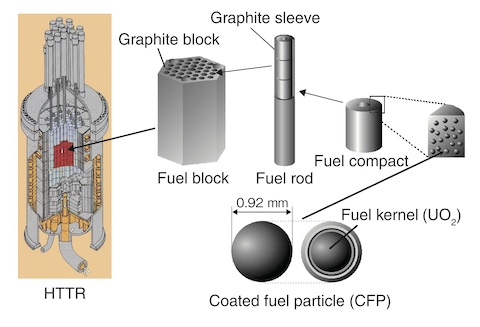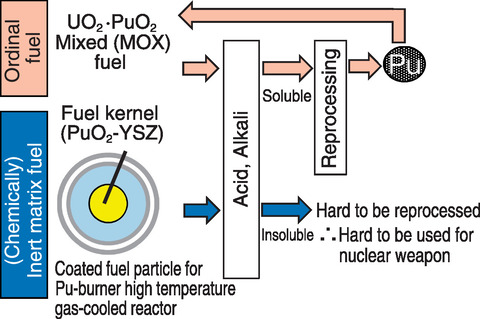
Fig.6-6 Fuel of the High Temperature Engineering Test Reactor (HTTR) in Japan Atomic Energy Agency *1,*2

Fig.6-7 Structure of the CFP with (chemically) inert matrix fuel and its nuclear proliferation resistance

Fig.6-8 Microstructure of the center region of the CeO2-YSZ kernel (scanning transmission electron microscopic bright-field image)
The Japanese government made an international commitment not to possess excess amount of plutonium (Pu) in its utilization plan. A high temperature gas-cooled reactor (HTGR) has inherent safety features; hence, the concept of the Pu-burner HTGR was proposed to safely reduce the amount of recovered Pu.
The minimum unit of the HTGR fuel is coated fuel particle (CFP) with a diameter of approximately 1 mm. Fissile materials and fission products are contained in each CFP. The CFP used in the High Temperature Engineering Test Reactor (HTTR), which is a HTGR test reactor constructed in Oarai Research and Development Institute in JAEA, employs a UO2 fuel kernel coated with four-layered coating layers (Fig.6-6). In the Pu-burner HTGR concept, the CFP, whose fuel kernel consists of inert matrix fuel, is employed. The inert matrix fuel should be chemically stable and should be hard to reprocess (Fig.6-7). The nuclear proliferation resistance of the CFP with inert matrix fuel kernel should be high. In this study, yttria-stabilized zirconia (YSZ) containing PuO2 (PuO2-YSZ) was employed as the fuel kernel.
The Nuclear Fuel Industries, Ltd. took charge of the development of fabrication technology of the PuO2-YSZ kernel and fabricated the simulated PuO2-YSZ kernels. We observed the microstructure of a fabricated simulated PuO2-YSZ kernel as a part of the inspections.
Cerium (Ce) was used as the material simulating Pu. The chemical properties of Ce imitate those of Pu. A solution was prepared by dissolving Ce, Y, and Zr nitrate powders in water. The prepared solution was dropped into ammonia water to form gelated particles. These gelated particles were then sintered to form the CeO2-YSZ kernels.
We observed the center region of the fabricated CeO2-YSZ kernel and found that the crystal grains were densely distributed (Fig.6-8). This result indicates the possibility that the fabrication method of the fuel kernel similar to that described above is proper. If the crystal grains are not densely distributed, the fuel kernel may not contain enough Pu.
This study includes the results of the “Development of Security and Safety Fuel for Plutonium Burner HTGR” performed under the Innovative Nuclear Research and Development Program by the Ministry of Education, Culture, Sports, Science and Technology (MEXT), Japan.
(Jun Aihara)
*1 Goto, M. et al., Conceptual Design of Small-Sized HTGR System (Ⅱ) - Nuclear Design -, JAEA-Technology 2012-017, 2012, 29p.
*2 HTGR Research and Development Center, Japan Atomic Energy Agency, What is HTGR ?, https://www.jaea.go.jp/04/o-arai/nhc/en/faq/index.html (accessed October 14th, 2021).